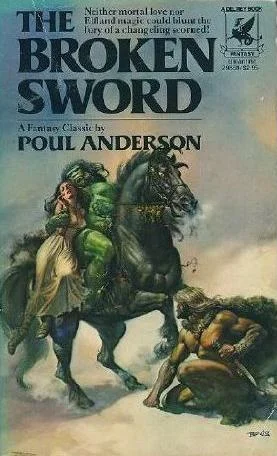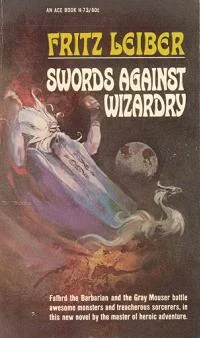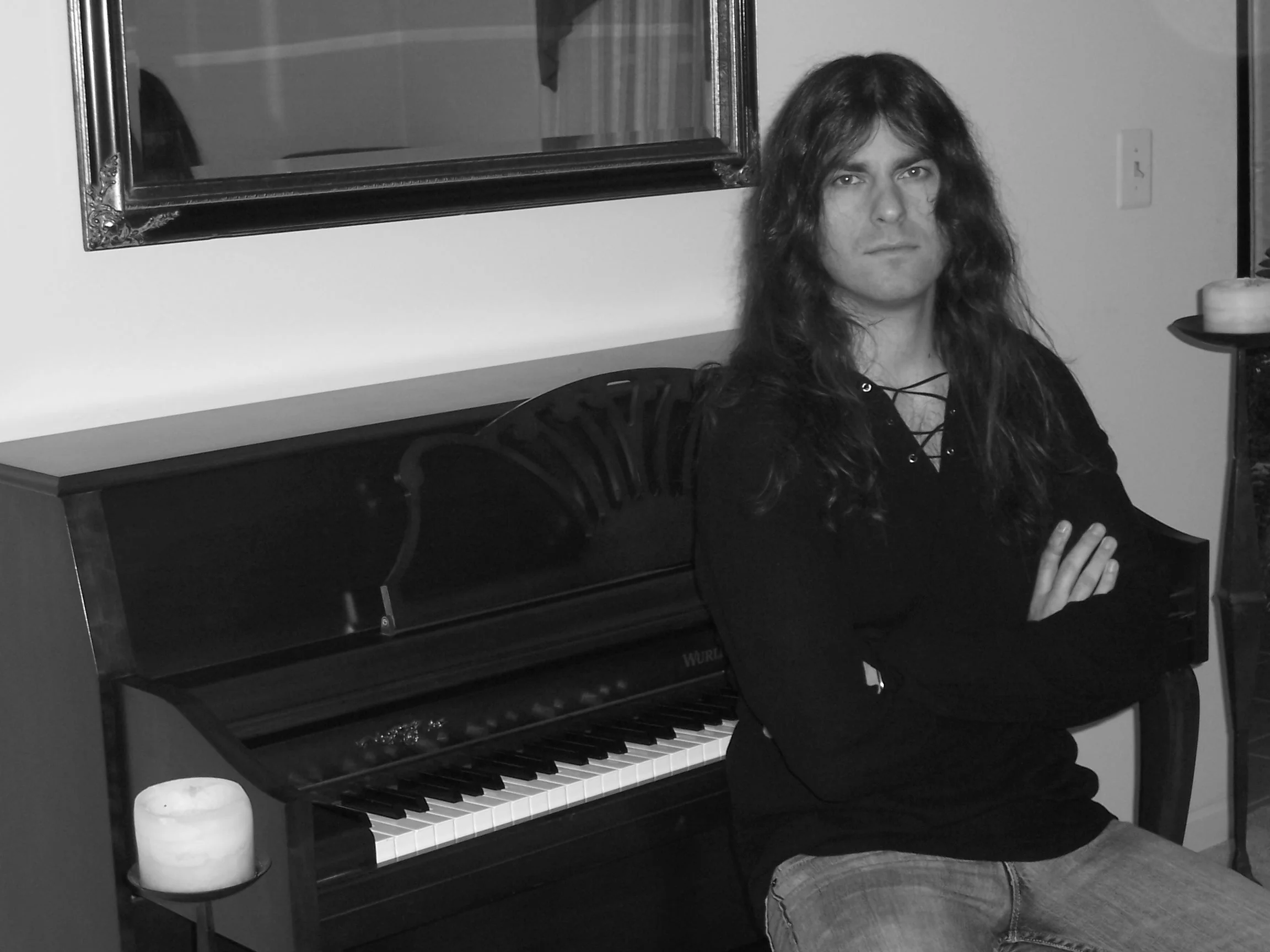The Norse Sagas of Poul Anderson: The Broken Sword
*This article originally appeared in the Sword and Sorcery in Heavy Metal column of the now-defunct Echoes of Crom Records website, March 2012.
Lin Carter once described Poul Anderson as being obsessed with the “Northern Thing”. A well known and loved author of fantasy and science fiction, the American author had an amazing knack for crafting epic stories that often pulled much from Norse legends and mythology.
In this article, I will focus on discussing one of Anderson’s Norse tales that I have found to be most inspiring, namely, The Broken Sword. (The second part of this article will cover Hrolf Kraki’s Saga and “The Tale of Hauk.”)
The Broken Sword
One of the most beloved and influential sword and sorcery works of all time, Anderson’s first fantasy novel The Broken Sword has become a classic piece of heroic fantasy literature that is regarded by many as being amongst the best. A tragic, bloody tale filled with violence, romance and dark magic, the story made history as being one of the first epic tales told in the old, Norse Saga tradition since H. Rider Haggard's 1890 Viking classic, The Saga of Eric Brighteyes.
The Broken Sword was first published in 1954, the same year as J.R.R. Tolkien’s The Fellowship of the Ring. Both stories borrowed much from Norse mythology—Anderson’s tale is set in a fictitious Viking age, and like him, Tolkien was also an avid scholar of the subject. This can be seen in many of his writings as well, which also borrow themes and ideas form the Sagas. Although Tolkien’s high fantasy classic received far more attention and success than Anderson’s sword and sorcery masterpiece, many feel that The Broken Sword is a better read and deserves a lot more recognition.
The story takes place in the Danelaw of England during the time of the Vikings and the rise of Christianity. In addition to humans, there are also beings of Fairie inhabiting the world. These consist of strange creatures of myth such as fauns, goblins, nymphs, etc. but the main conflict is between the elves and trolls.
Anderson's elves are much darker and fiercer, with a different sense of morality, than those of the fair, noble race created by Tolkien. They reside in the ancient realm of Alfheim, working sorcery, harrying lands and enslaving beings of the other Fairie races. Likewise, the trolls are ruthless, monstrous creatures who bring war wherever they go, and when they are not pillaging, reside in Trollheim. The beings of Fairie are invisible to all human eyes besides those who are magically given witch-sight.
The Broken Sword focuses on two main characters: Skafloc and Valgard. One night while Imric the elf-earl is riding through the woodlands of the English countryside, he comes upon a witch in a small hut. The woman tells him that there is an unbaptized human babe at Orm’s garth a few miles ahead, whose father is away at viking. Thinking the human child useful (humans can do many things elves can't, such as handle steel), the elf-earl swiftly rides back to his province of Elfheugh where he has the troll princess, Gora, daughter of Illrede the troll king, imprisoned in his dungeons. He instantly creates a changeling by mating with the creature in a magic ritual. Spawned by sorcery, this new child looks identical to Orm’s son but has the blood of elf and troll. Imric rides to Orm’s garth and secretly replaced the human child with the changeling while it is asleep on its mother’s breast.
The human child Imric names Skafloc and takes as his foster son to live amongst the elves in their haven of Elfheugh. The changeling is named Valgard and stays with Orm and his family. He is like Skafloc in look and appearance but unlike his counterpart, has a dark and evil temperament. After discovering his true heritage and murdering several of his kin, Valgard leaves his homeland and becomes leader of the troll army. Meanwhile, Skafloc becomes a mighty and noble warrior among the elves. He is like them in all ways except in blood—he uses elf magic, lays with elf women, and even has their uncanny witch-sight. After a council with the Erlking, the elves learn they must prepare for war against the trolls and the epic struggle begins.
The sword indicated by the title is a most important factor in the story. On the day of Skafloc's naming ceremony, Skirnir, the Æsir messenger, comes to Elfheugh bearing a naming gift for the young future warrior. It is a broken sword, which he gives to Imric along with instructions to guard the weapon until Skafloc is old enough to wield it. Later in the story, the sword is reforged, and it is learned that the sword is actually the legendary enchanted blade Tyrfing, which was broken by Thor so that it could no longer wreak evil in the world. The sword makes its wielder undefeatable in battle, yet bears a curse that every time it is drawn, it must drink blood and in the end, somehow, it brings the bane of the hero who wields it.
An interesting aspect of the story is the use of different Gods from Nordic, Celtic and Christian religions. The Vikings worship the Old Gods, Odin, Thor and the like, and make sacrifices to the Æsir. Meanwhile, there is also the worship of the Christian God and the “White Christ” going on. This becomes a key struggle in the story. The only reason Imric was able to steal and foster Skafloc was because the child had not yet been christened. The religious aspect plays a part in other conflicts in the story as well. There is also quite a bit of black magick, witchcraft, necromancy and even a small degree of Satanic Occultism when the witch summons forth Sathanas to aid her in her conquest to wipe out the seed of Orm.
Like many of the ancient Norse Sagas, the story contains several verses and poems scattered throughout. In the time of the Vikings, much of the culture lay in the verses. Many well-educated men were expected to make them on occasion and there were people called the skalds who made a living doing so. Therefore, it would only be fitting that Anderson include such prose in his Epic. The characters in the story (especially Skafloc) seem to have an amazing ability to come up with verses when overcome with certain emotions, and recite them on the spot. This is a constant theme throughout the novel and these are some of the best poetic pieces I have read in any fantasy novel. There are several other writers who have done a similar thing, but Anderson's way of creating Eddic verses was quite astounding.
There were two different versions of The Broken Sword published: The original in 1954, and an edited version in 1971. When it was first written, the story was slow to find a publisher and was initially only given a single printing. Then, in ‘71, it was reprinted by Lin Carter through Ballentine books. This new version was revised and edited by Anderson, who had developed much as a writer since the time of the original printing. It is a bit of a shame though, because in the revised edition, he chose to change some great lines and remove a lot of descriptive adjectives, making it not quite as good as the original, in my opinion. I have read both versions and while both are great, for me, the 1954 edition is the real deal. Due to its single printing, this version was a rare find for many years. Fortunately, in 2002, a new re-issue of the original, unedited story was released by Gollancz Publishing as part of their Fantasy Masterworks series.
Influence on Sword and Sorcery
The Broken Sword has been extremely influential on many writers over the years, but none it seems so much as Fantasy Grand Master, Michael Moorcock. I have read articles written by Moorcock where he credits the novel as being a huge influence on him in his early years. This couldn't be more evident than in the legendary Elric Saga. Forged in Chaos, Elric's runesword Stormbringer steals the souls of his victims and provides him with power and vitality, yet bears a curse that ultimately brings upon his defeat.
This same idea can be seen in The Broken Sword—Skafloc's runesword feeds him with an uncanny power, making him a stronger and fiercer warrior. Also, like Elric, in the end, the sword eventually brings his downfall. Like Stormbringer, the weapon has the need to feed every time it is unsheathed and there are some unwanted killings, just as in the Moorcock books.
Another sword and sorcery mastermind greatly influenced by Poul Anderson's work was Karl Edward Wagner, creator of the barbarian-antihero, Kane. In his essay, “The Once And Future Kane,” Wagner mentions that along with the Gothic fiction tales of Charles Robert Maturin and others, The Broken Sword was one of his favorite books of all time. Although not quite as evident as with Moorcock, one can easily see that the dark and savage nature of the story definitely lives on in Wagner's Kane saga.
As I was rereading The Broken Sword, I was thinking that I could also maybe see a small connection between The Broken Sword and the writings of Fritz Leiber. There is one part specifically that strikes me as being quite similar to some events that that take place in “Stardock” (1965), one of Leiber's many great Fafhrd and the Gray Mouser stories.
In The Broken Sword, Skafloc and Mananaan Mac Lir the sea king sail to Jötunheim to find the giant Bolverk who can reforge the sword. When they arrive, they are forced to venture into a savage, northern, snow and ice-covered wilderness. In order to reach the cave in which Bolverk resides, they must climb an enormous glacier to get there. When they begin trekking up the huge slope, they are confronted by a giant, venomous ice-worm, which they must do battle with.
Likewise, in “Stardock,” Fafhrd and the Gray Mouser also must climb an enormous snow-covered ice-mountain to retrieve a forbidden treasure hidden at the top. On the way up the crag, they battle a ferocious ice-worm very similar to the one described in The Broken Sword, which drools venom as well.
Having no idea whether or not Leiber was influenced by the works of Anderson, I decided to go back and revisit his story once again, to analyze the similarities. Sure enough, as soon as I pulled my old copy of Swords Against Wizardry off the shelf, blew the dust off and looked through the table of contents, one of the first things I noticed was Leiber's dedication of “Stardock” to Poul Anderson!
While this definitely hints that maybe I was correct in my assumption, it is really just some of the ideas and imagery in the two stories that are similar, and that is the only story in Leiber's legendary saga that I notice any direct similarities like that. Certainly the writing styles and vibe of the two authors' works are drastically different, and both were incredibly original, but it is still intriguing to me how much of an impact Anderson's story has had on some of the most influential sword and sorcery writers of all time.
An amazing and dramatic reading experience, The Broken Sword remains one of the most famous and highly regarded works of Poul Anderson's career and is my own personal favorite.
The second part of this article, concerning Hrolf Kraki’s Saga and “The Tale of Hauk,” can be found here.
Matthew Knight and his band ETERNAL WINTER are currently hard at work in the studio recording their next full-length album, Archaic Lore Enshrined: Songs of Savage Swords and Dark Mysticism. The cassette version will include an epic bonus track entitled “Swords and Ice Magic,” which—despite its title being an homage to Fritz Leiber—is based on Poul Anderson’s The Broken Sword.





